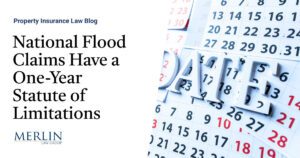Cat bond yield of around 13% a “natural buffer” against hurricane losses: Twelve

With catastrophe bond market yields remaining elevated at above the 13% mark, investment manager Twelve Capital has noted that this level of return represents a “natural buffer” against hurricane losses.
In a recent update, Swiss headquartered catastrophe bond, ILS and reinsurance investment manager Twelve Capital, reminds investors that it is the more significant loss events that the cat bond market is exposed to.
Given where catastrophe bonds sit in the reinsurance and retrocession towers of insurers and reinsurers, as well as the fact terms of coverage have improved and aggregate coverage in the market has shrunk in recent years, cat bonds are considered only exposed to larger hurricane losses than they might have been a few years back.
Twelve Capital said that, “Since 1980, we have witnessed nearly 600 storms forming in the Atlantic. Most of them did not make landfall or transform into major hurricanes – those that are more likely to generate significant insured losses.
“In fact, out of the 600 storms, only 11 major hurricanes have made landfall in metropolitan areas over the past 24 years.”
The ILS investment manager went on to say that, “Furthermore, climatological models suggest that hurricanes generating losses below the USD 50bn mark would not lead to losses to the Cat Bond market. More infrequent storms, with likelihood of occurring one every 25 years or less, would start to generate some losses. These losses would progressively increase in case of extremely rare events.”
The returns of the catastrophe bond market remain at levels that are historically high. As we reported recently, the cat bond market yield stood at just under 13.7% as of the end of June 2024.
Twelve Capital noted that, “We remind investors that the current attractive spreads and elevated risk-free rates represent a natural buffer of approximately 13% to absorb any insured losses.”
Adding, “Moreover, the likelihood of losses from smaller, yet more frequent storms, have diminished as Cat Bonds with aggregate-type triggers constitute around 25% of the market compared to more than 50% in 2020.”
Finally, the investment manager noted that its portfolios of catastrophe bonds are underweight the more junior tranches of cat bonds, which can help to further protect against loss impacts during the hurricane season.






